There’s something undeniably charming about a dog snuggled up and peacefully sleeping—until the room starts vibrating with their snores. While many dogs snore occasionally, certain breeds are notorious for turning nap time into a full-blown sound performance. If you’ve ever shared a bed with a pup who sounds like a chainsaw, you’re not alone.
Most loud-snoring breeds have one thing in common: a flat-faced, or brachycephalic, structure. These dogs typically have short muzzles, narrow nostrils, and elongated soft palates, all of which contribute to restricted airflow. This combination creates the perfect storm for deep, rumbling snores that can rival even the loudest human snorers. While often harmless, these sounds are a direct result of their unique anatomy.
Curious which breeds are the biggest nighttime noisemakers? In this article, we’ll explore the top dogs known for their thunderous snoring habits. From bulldogs to pugs and beyond, get ready to meet the lovable (and loud) sleepers who might just make you reach for a pair of earplugs.
Dog Breeds That Snore Loudly
1. Pekingese
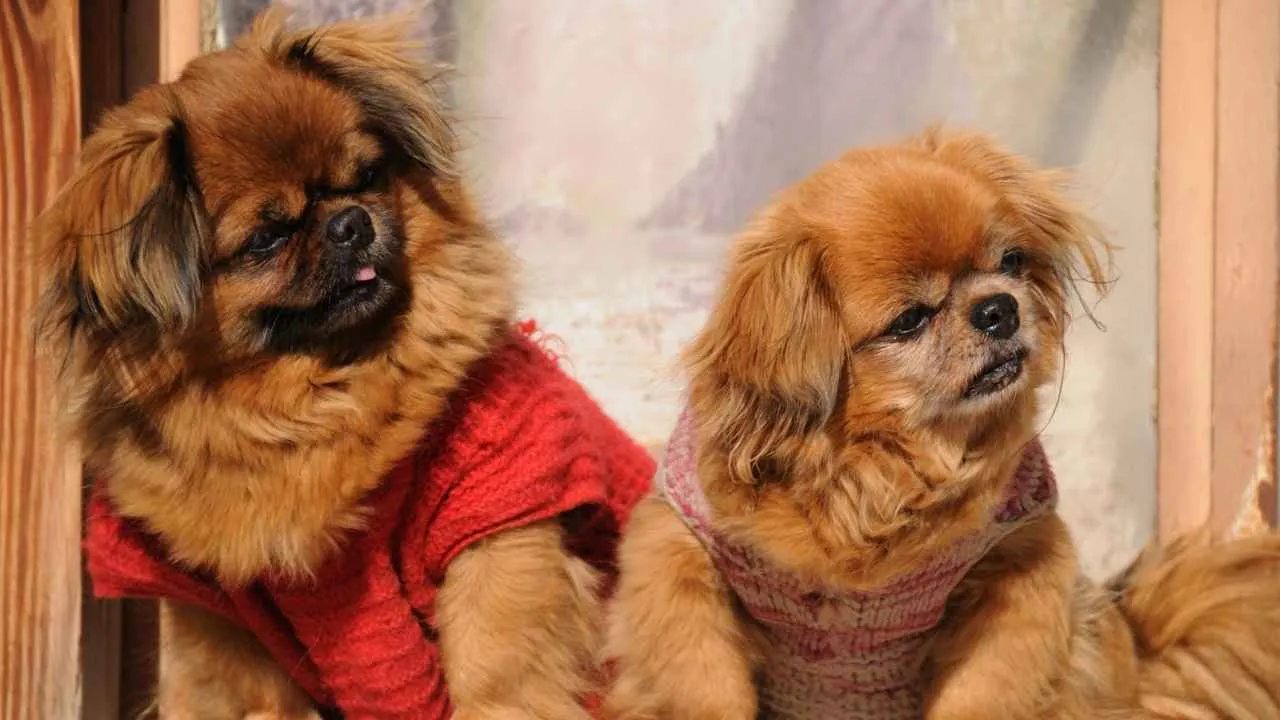
The Pekingese, affectionately known as the “lion dog,” is a compact, regal toy breed developed for Chinese royalty. Originating in ancient China, these dogs were revered companions in imperial courts and were often carried in silk-lined baskets.
Pekingese typically weigh up to 14 pounds and stand around 6 to 9 inches tall. According to the AKC, Pekingese have their most prominent coat around the neck and shoulders, forming their distinctive “lion’s mane” appearance.
Their sturdy little frames and signature “rolling” gait add to their unique charm. With a lifespan of 12 to 14 years, they are classified within the toy group and are known for being loyal, dignified, and occasionally aloof.
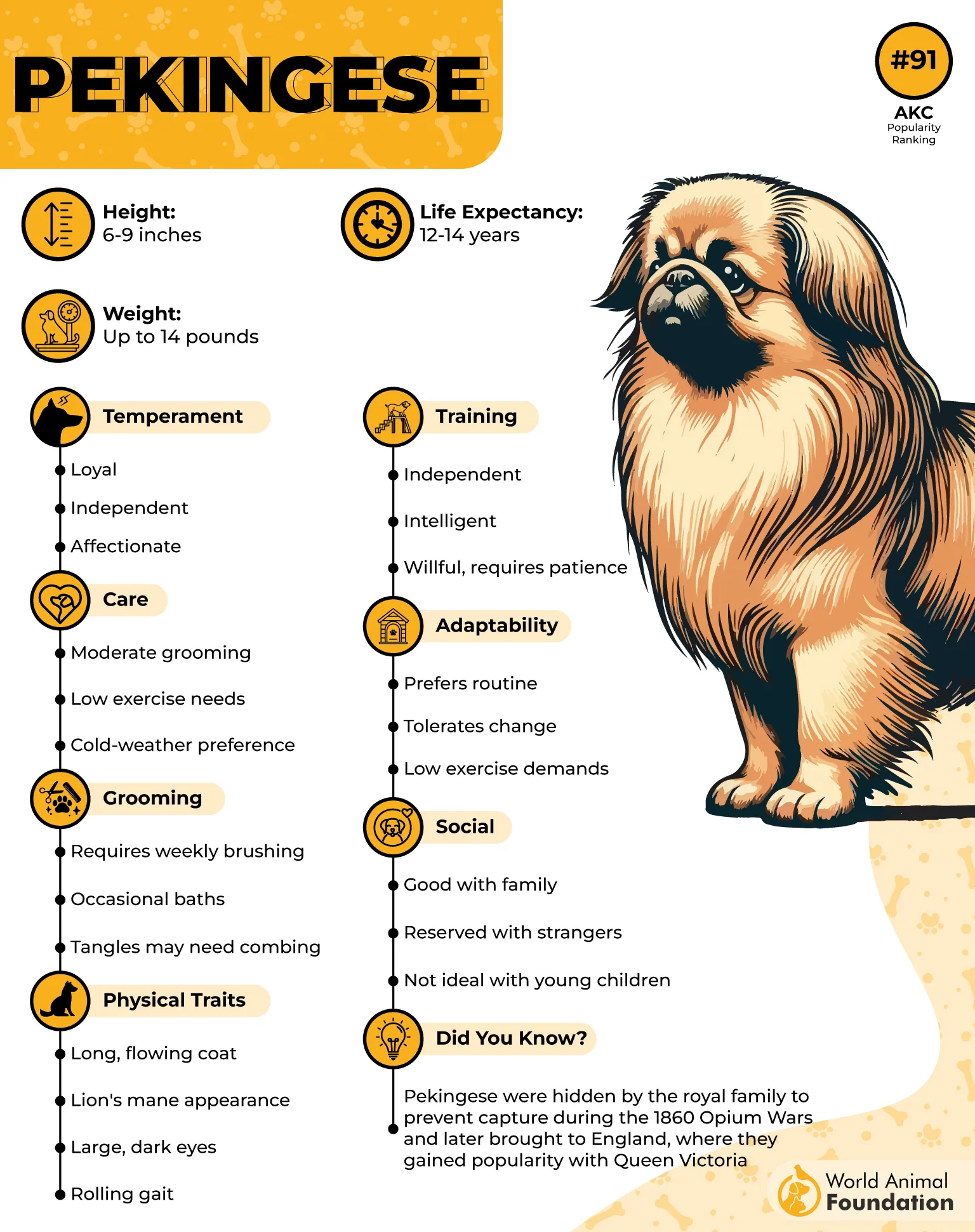
Unique Traits
Pekingese are brachycephalic, meaning they have short, flat faces that contribute to their signature snoring and mouth breathing. Their narrowed airways and long soft palates make them noisy sleepers, even while awake.
Despite their aristocratic aura, they form deep bonds with their families and are alert companions. However, their thick double coat requires regular grooming to prevent matting, and their small size makes them sensitive to heat.
A fun fact: these lion-like pups were so prized in imperial China that commoners once bowed in their presence.
2. Pug

The Pug, affectionately known as a “multum in parvo” or “a lot in a little,” is a small but solid breed with an ancient lineage tracing back over 2,000 years to imperial China. Revered by emperors and later adored across Europe, Pugs became official mascots of the House of Orange in Holland.
Today, these charming dogs remain beloved companions, known for their wrinkled brows, expressive eyes, and squashed faces that delight dog lovers everywhere. Pugs typically weigh between 14 to 18 pounds and stand about 10 to 13 inches tall.
They belong to the Toy Group and enjoy a life span of 13 to 15 years. Their short coat comes in fawn, silver, or black, often with a contrasting dark muzzle.
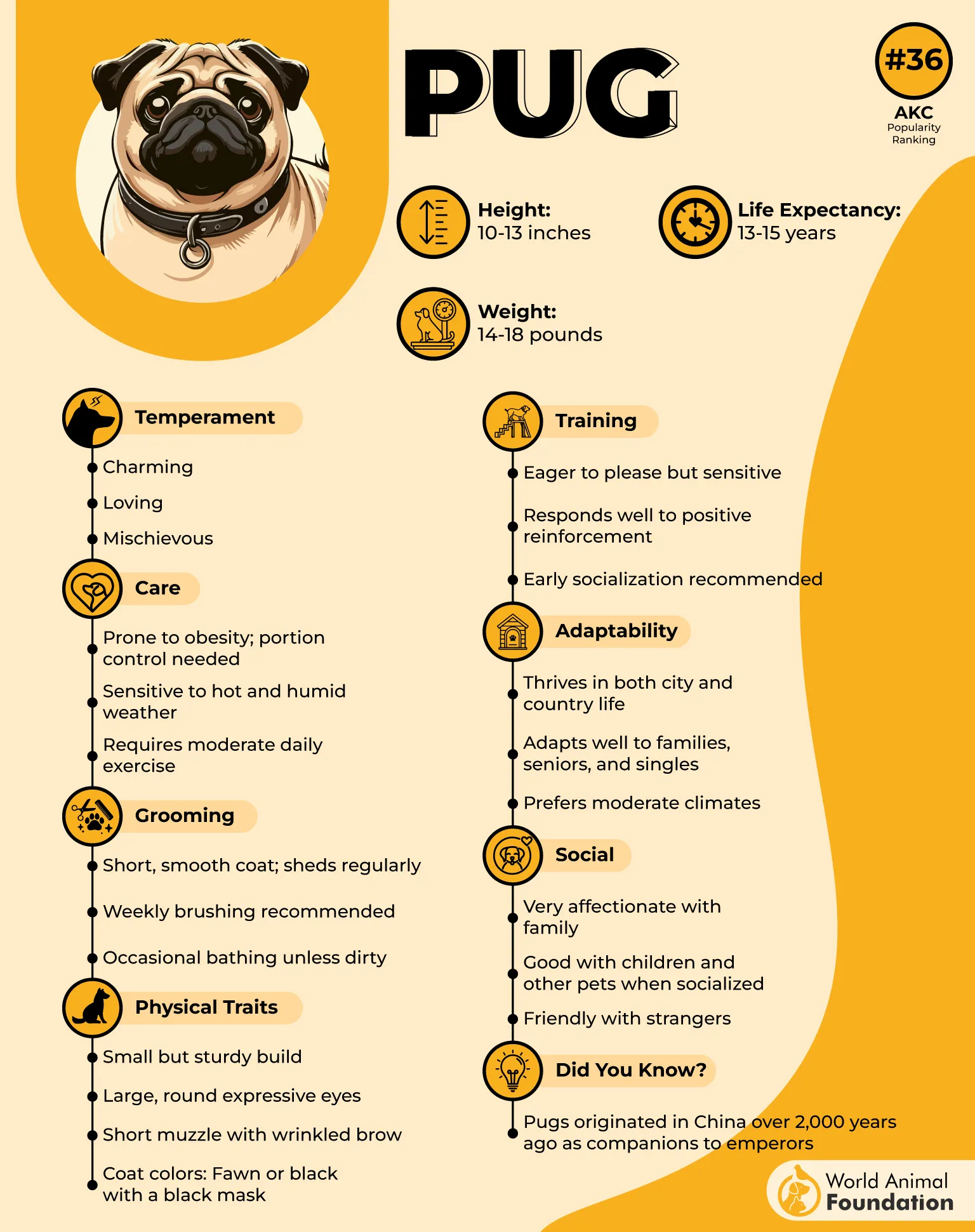
Unique Traits
Pugs are the epitome of personality-packed pets, but their snoring is as legendary as their charm. PetMD explains that they are brachycephalic breeds, which typically have a short muzzle, flat face, narrow nostrils, and restricted airways, often accompanied by an elongated soft palate. This lead to loud snorts, grumbles, and snores—even when they’re awake.
Fun fact: you’ll never lose track of a sleeping Pug—they’re usually the loudest presence in the room.
3. Boston Terrier

The Boston Terrier, affectionately known as the “American Gentleman,” is a small but spirited companion recognized for its dapper tuxedo-like coat and expressive eyes. Originating in the United States during the late 1800s, this breed was developed by crossing the English Bulldog with the now-extinct White English Terrier.
Bostons typically stand around 15 to 17 inches tall and weigh under 25 pounds. Their short, square muzzle, erect ears, and compact body contribute to their unmistakable silhouette. WebMD notes that these dogs move with jaunty, rhythmic strides, which reflect their naturally enthusiastic personalities.
As a member of the non-sporting group, the Boston Terrier thrives in urban environments and has an average lifespan of 11 to 13 years.
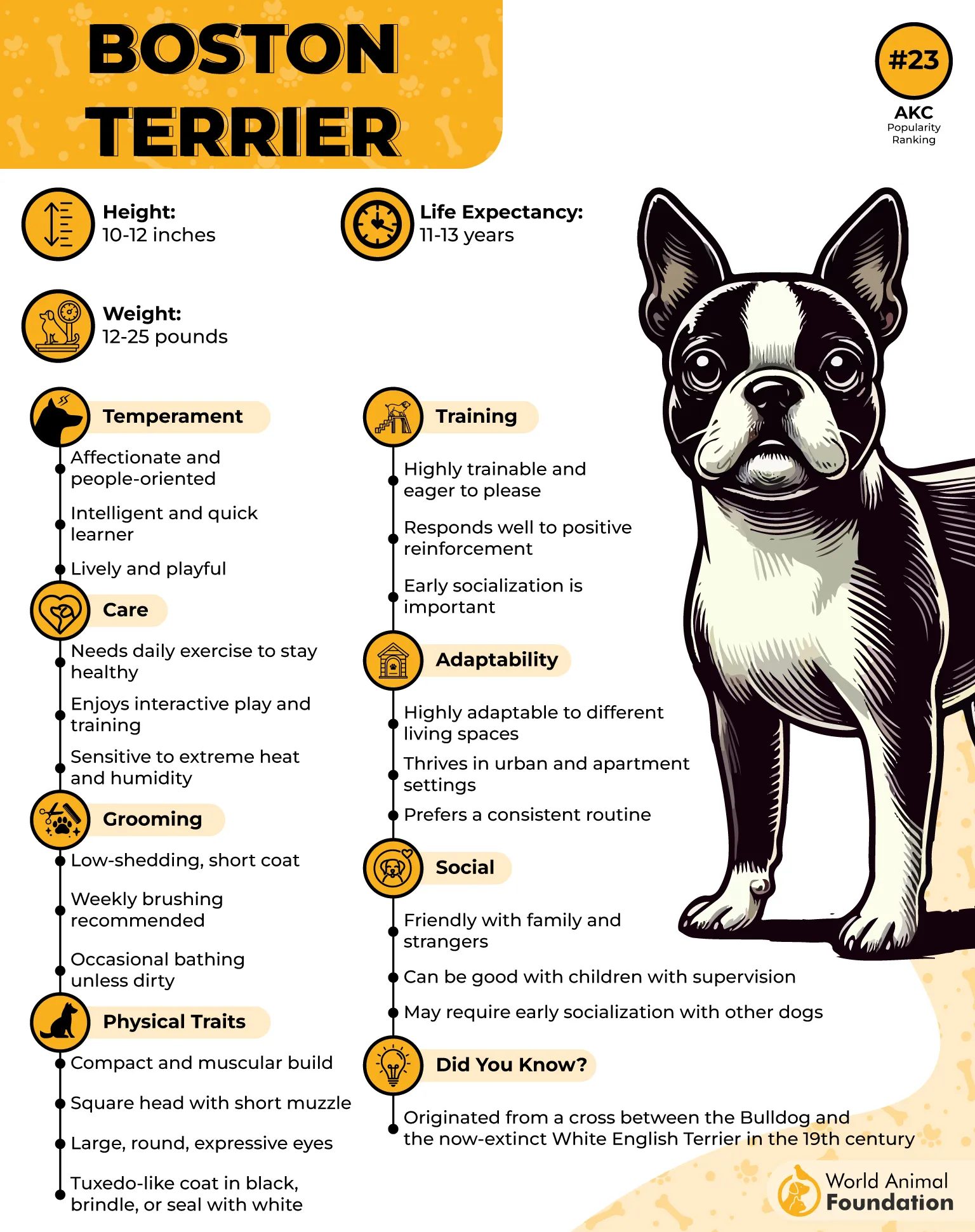
Unique Traits
Boston Terriers are brachycephalic. They also tend to shift sleeping positions frequently, which can intensify the volume and variety of their snores. While their snoring might seem dramatic, a simple solution like elevating their head with a pillow can help minimize it.
Fun Fact: Despite their noisy sleep, Boston Terriers are so beloved in Massachusetts that they were designated the official state dog in 1979.
4. Bullmastiff
The Bullmastiff, a powerful guardian with roots in 19th-century England, was originally bred by crossing Bulldogs and Mastiffs to protect estates from poachers. Known for their imposing presence, they stand 24 to 27 inches tall and weigh between 100 and 130 pounds.
Despite their size, Bullmastiffs are calm, affectionate companions that make loyal family pets. They belong to the Working Group and typically enjoy a life span of 7 to 9 years. Recognizable by their broad head, muscular build, and short coat—commonly fawn, brindle, or red—they possess a noble yet approachable appearance.
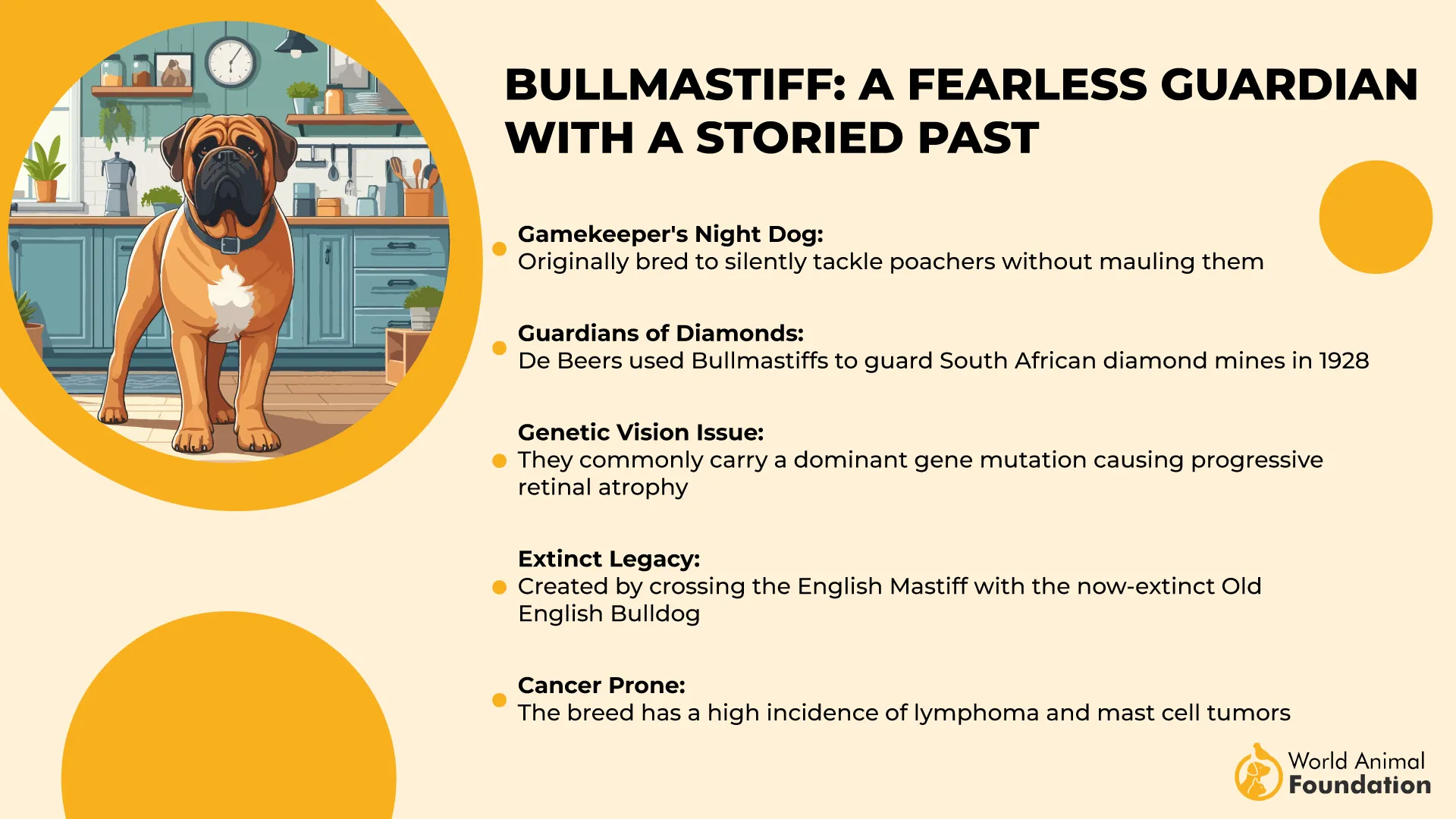
Unique Traits
Although not as brachycephalic as Bulldogs, Bullmastiffs still have a short snout and loose skin around their neck and face. These physical features, combined with their large size, contribute to obstructed airways and result in deep, resonant snoring.
Their heavy jowls can intensify this sound when they lie down, especially if they’re overweight. Their docile nature means they love lounging and sleeping, often in positions that amplify their signature snore.
Fun Fact: While they’re not loud barkers, their snores may echo through the house—an endearing hallmark of this gentle giant.
5. French Bulldog
The French Bulldog, affectionately known as the “Frenchie,” is a small, sturdy breed admired for its bat-like ears, affectionate demeanor, and easy adaptability to urban living. Originating in 19th-century France as a companion to lace workers, this breed is a descendant of English Bulldogs crossed with local ratters.
Frenchies typically stand between 11 and 13 inches tall and weigh under 28 pounds. They possess a compact and muscular frame, a smooth coat in various shades, and a flat face that contributes to their snore. This brachycephalic breed belongs to the Non-Sporting group and usually enjoys a lifespan of 10 to 12 years.
Unique Traits
French Bulldogs are notorious snorers due to their short snouts and narrow nasal passages. Their features, along with a tendency toward respiratory sensitivities and allergies, often result in loud snorting, wheezing, and snoring.
While this can be endearing or distracting, depending on the listener, it’s a normal part of the Frenchie experience. Despite their noisy slumber, they are charming, low-maintenance companions who rarely bark and adapt well to most households.
Did you know? In 2022, the French Bulldog overtook the Labrador Retriever as the most popular dog breed in the United States.
6. Boxer
Boxers are a high-spirited and athletic breed known for their strength, affection, and playful demeanor. Originally developed in Germany in the late 19th century from the now-extinct Bullenbeisser and English Bulldog, Boxers were bred for hunting and guarding.
These muscular, medium-to-large dogs stand up to 25 inches tall and weigh between 50 and 80 pounds. They boast a short, sleek coat—usually fawn or brindle with white markings—and their expressive, dark eyes and distinctive wrinkled foreheads give them a charming and alert expression. Boxers belong to the working group and typically live 10–12 years.
Unique Traits
Boxers are classic brachycephalic dogs. Adding to this, Boxers sometimes sleep on their backs, a position that can further constrict their airways and amplify their snoring sounds.
Despite their noisy slumber, Boxers are energetic during the day, requiring regular exercise to stay healthy. However, their flat faces also make them susceptible to overheating. This duality—high activity levels followed by snore-filled naps—is part of what makes Boxers so unique.
Fun fact: This flat-faced breed gets its name from its habit of playfully “boxing” with its front paws.
7. Shih Tzu
The Shih Tzu, also affectionately known as the “lion dog,” is a small, ancient breed originating from imperial China, bred specifically for companionship. With an average height of 9 to 10.5 inches and weighing between 9 to 16 pounds, these toy group members are easily recognized by their luxurious double coat, short muzzle, and distinctively expressive eyes.
Their coat can be long and flowing or clipped into a puppy cut for easier maintenance. With a lifespan of 10 to 18 years, Shih Tzus are affectionate family dogs that prefer indoor living and close human interaction.
Unique Traits
These little dogs are brachycephalic, which significantly contributes to signature snoring in dogs. Their compact airways, narrow nostrils, and occasionally elongated soft palate often lead to noisy breathing, especially during sleep. Overweight Shih Tzus may experience louder or more frequent snoring episodes.
Additionally, their prominent underbite can lead to overcrowded teeth and potential dental issues if not properly managed.
Fun Fact: Despite their posh appearance, Shih Tzus are delightfully down-to-earth lap dogs that can surprise you with the volume of their snore.
Conclusion
If you share your home with a snoring dog, you already know that their nighttime noises can be both endearing and a little disruptive. Breeds like the Shih Tzu and other brachycephalic pups are especially prone to snoring due to their facial structure. Their shortened airways and soft palates can create the perfect storm for nighttime rumbling. While some snoring is perfectly normal, pet parents should pay attention to changes in snoring volume or patterns, as these could indicate potential issues like sleep apnea or respiratory discomfort.
To keep your dog’s snoring from becoming a problem, it’s important to help them maintain a healthy weight, especially since weight gain can worsen breathing difficulties. Regular exercise, proper grooming, and routine vet visits are essential for managing their overall well-being. And while snoring might be more common in certain breeds, even other dogs can develop similar habits. Embracing their quirks—snorts and all—comes with loving a four-legged snorer.


